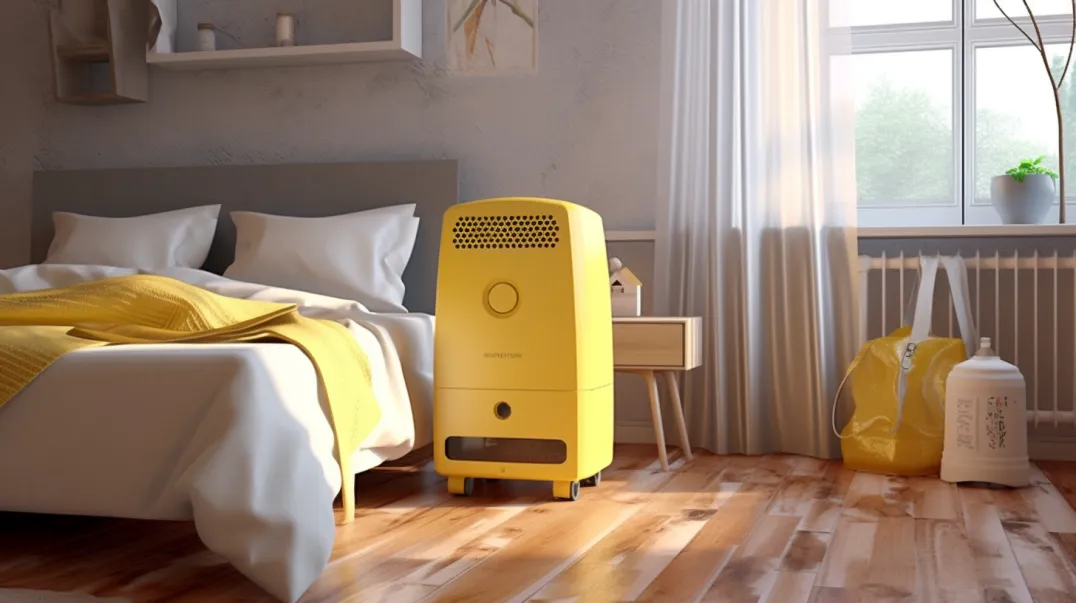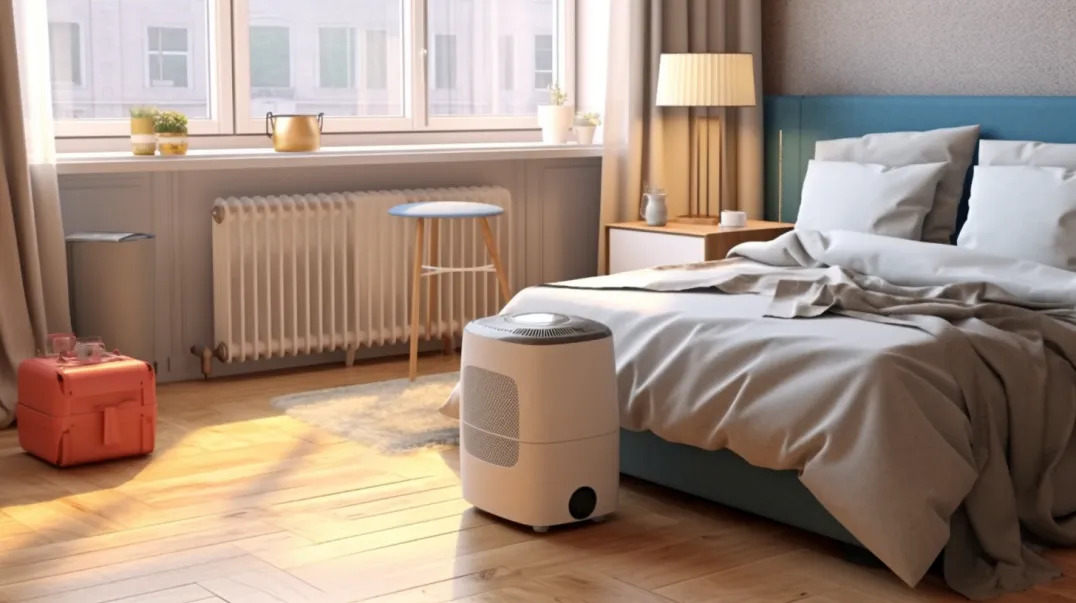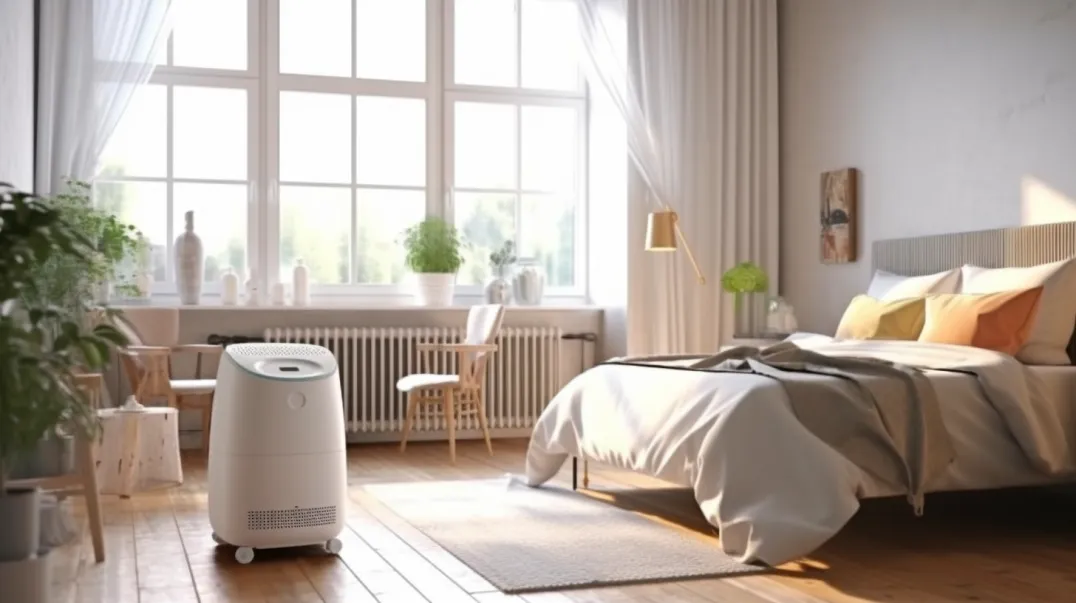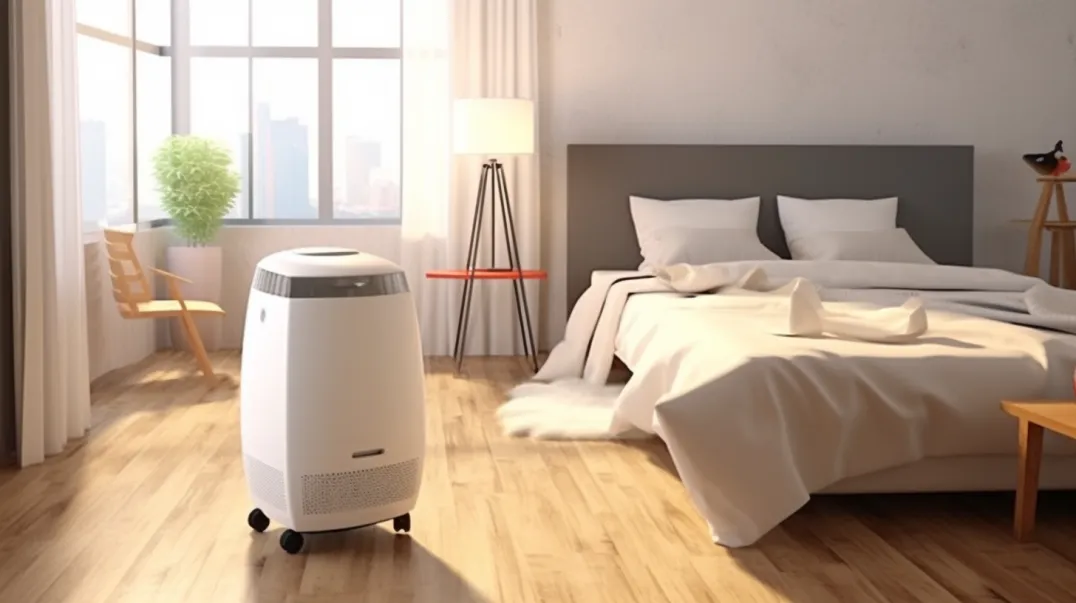Crawl Space Blog
Discover the latest trends, updates, and technological advancements in crawl space encapsulations and many more crawl space services.

24 Apr, 2024
In the intricate world of indoor gardening, understanding and managing the humidity levels specific to your garden’s environment is not just beneficial but necessary for the health and prosperity of your plants. Humidity the amount of water vapor present in the air plays a critical role in plant physiology, affecting everything from nutrient uptake to disease resistance. Tailored humidity control helps in creating a conducive microclimate that mimics the native habitats of various plant species, enhancing their growth and survival. Creating and maintaining the right humidity level involves monitoring the environmental conditions regularly and adjusting as necessary using tools like humidifiers, dehumidifiers, and hygrometers. For those managing diverse plant collections, the ability to tailor humidity conditions to specific areas or containers can make a significant difference in plant health outcomes. By understanding the needs of your plants and the tools at your disposal, you can create a thriving indoor garden that not only looks good but is also healthy and productive. This blog will explore the importance of tailored humidity control, offering insights and practical tips on achieving the perfect balance tailored to your indoor garden's specific needs.

22 Apr, 2024
Indoor gardening offers a unique set of advantages for gardening enthusiasts, providing a controlled environment that can support year-round cultivation of diverse plants. One of the critical factors in creating and maintaining a successful indoor garden is the management of humidity. Humidity levels can significantly influence plant health, affecting everything from transpiration rates to pest prevalence. Proper humidity management helps in mimicking a plant’s natural habitat, which is essential for optimal growth and development. However, controlling humidity is not without its challenges. It requires careful balance: too little humidity can dry out plants and soil, impairing plant functions and leading to stress, while too much humidity can create an ideal environment for fungal infections and pests, compromising plant health and garden vitality. Additionally, indoor settings naturally have less airflow compared to outdoors, which can lead to stagnant conditions and uneven humidity distribution. Despite these challenges, the benefits of managing humidity correctly are substantial. Properly humidified air promotes healthier plant growth, enhances leaf vibrancy, and can increase yield in fruiting and flowering plants. It also plays a crucial role in nutrient uptake and overall physiological stability of plants. By understanding the dynamics of humidity in indoor environments, gardeners can prevent plant diseases, optimize growth conditions, and extend the lifespan of their garden. In this blog, we will explore the importance of humidity in indoor gardening, outline the key challenges gardeners face, and provide practical strategies for effective humidity management to help you achieve a thriving indoor garden. Whether you are a seasoned gardener or just starting out, mastering these concepts can lead to more robust plant growth and a more rewarding gardening experience.

19 Apr, 2024
Ventilation is fundamental to maintaining a healthy indoor environment. It involves the exchange of indoor air with fresh outdoor air, which helps to reduce pollutants, control moisture levels, alleviate unwanted odors, and prevent the accumulation of indoor contaminants such as dust, mold spores, and volatile organic compounds (VOCs). Proper ventilation is especially critical in modern homes, where energy-efficient practices can often result in airtight spaces that, while excellent for reducing energy costs, may limit air flow and trap potentially harmful particles. In this blog, we explore the vital importance of ventilation in enhancing indoor air quality. Good ventilation supports respiratory health and overall well-being, mitigates the risk of airborne diseases, and helps protect the integrity of buildings. Understanding how to effectively manage ventilation can ensure that indoor environments remain safe, comfortable, and conducive to occupants' health and happiness. We will delve into the various aspects of residential and commercial ventilation systems, discuss natural versus mechanical ventilation, and provide actionable tips to improve air flow in different indoor settings. This comprehensive overview aims to equip you with the knowledge and tools to optimize your indoor air quality through effective ventilation strategies.

17 Apr, 2024
Laundry rooms are essential household spaces where cleanliness and hygiene converge. Yet, despite their practicality, they often fall prey to persistent issues of humidity and dampness. The primary activities in a laundry room—washing and drying clothes—inevitably release moisture into the air. This moisture, if not adequately managed, leads to an environment susceptible to mold growth and the emanation of musty odors, which can pervade adjacent spaces and impact overall indoor air quality. Moreover, these conditions can compromise the structural integrity of the home and damage the laundry appliances themselves. In this blog, we delve into the intrinsic factors that contribute to the high humidity levels in laundry rooms, exploring how routine laundry processes, room layout, ventilation efficiency, and external climate conditions intertwine to create this challenging environment. By understanding these fundamental aspects, homeowners can implement effective strategies to mitigate moisture accumulation, thus safeguarding their home’s structure, prolonging appliance longevity, and ensuring a healthier living space. This proactive approach not only enhances the functionality of the laundry room but also contributes to a more comfortable and pleasant home atmosphere.

15 Apr, 2024
Managing humidity in large spaces such as warehouses, auditoriums, and industrial settings presents a unique set of challenges that go beyond those encountered in more conventional residential or small commercial environments. These vast spaces, with their high ceilings and extensive square footage, require specialized approaches to humidity control to maintain structural integrity, protect contents, and provide comfortable and safe working conditions. In this blog, we will explore the specific difficulties involved in controlling humidity in large spaces and offer expert advice and strategic insights to effectively tackle these challenges. Large spaces typically experience more significant variations in humidity due to factors like frequent opening of doors, varying occupancy or storage loads, and the extensive use of ventilation systems. The consequences of unmanaged humidity in such environments can be severe, including damage to stored goods, increased maintenance costs for humidity-sensitive equipment, and compromised structural health of the building due to condensation and mold growth. Moreover, the energy consumption required to heat and cool these massive areas is substantial. Optimizing humidity levels is not only essential for maintaining an efficient operational environment but also for ensuring energy efficiency. Correct humidity management can lead to considerable energy savings and help in achieving sustainability goals. Stay tuned as we delve deeper into the complexities of humidity control in large spaces, discuss the implications of poor humidity management, and outline effective strategies and technologies that can be employed to overcome these challenges. Whether you're managing a sprawling warehouse, a grand auditorium, or a robust industrial facility, understanding the dynamics of humidity in these spaces is key to optimizing their operation and longevity.

12 Apr, 2024
Welcome to our comprehensive guide on managing indoor humidity levels to boost energy efficiency in your home or office. Humidity control isn't just about maintaining comfort or preventing mold; it's also a critical component in optimizing your energy usage and reducing utility bills. In this post, we’ll delve into the underappreciated role that humidity plays in energy conservation and provide you with actionable strategies to harness its benefits. Understanding the dynamics of air moisture and its interaction with heating and cooling systems can lead to significant improvements in how energy is consumed. Whether it's through natural methods or the use of advanced technologies, managing humidity levels allows for a more controlled environment, promoting not only comfort but also greater energy efficiency. From explaining the science behind humidity’s impact on energy to exploring practical tools and tips for maintaining the ideal levels, this guide will equip you with the knowledge and techniques to create a more energy-efficient and cost-effective environment. Stay tuned as we explore how simple adjustments in your daily habits and upgrades to your home systems can lead to noticeable reductions in energy consumption, helping you save money while contributing to environmental conservation. Join us as we navigate the complexities of humidity control and unveil the secrets to a more sustainable living space.

10 Apr, 2024
Maintaining the perfect balance of humidity within our homes is akin to walking a tightrope. Too much or too little moisture in the air can lead to a host of problems, affecting not only our comfort but also our health and the integrity of our living spaces. This delicate balance is often disrupted by common issues encountered in home humidity control, leading many to seek solutions to these pervasive challenges. In this comprehensive guide, we delve into the intricacies of home humidity control, shedding light on the common hurdles homeowners face and offering insights into navigating these misty waters with ease. From the dry, itchy air of winter months that leaves us longing for moisture to the oppressive dampness of summer that can make our homes feel more like a tropical rainforest, the battle against humidity is a year-round endeavor. These extremes can lead to a myriad of issues, including health problems, damage to home furnishings, and an overall decrease in the quality of indoor air. Understanding these challenges is the first step toward creating a healthier, more comfortable living environment. In the following sections, we will explore the most prevalent issues in home humidity control, such as the impact of seasonal changes, the role of inadequate ventilation, and the pitfalls of improper use of humidifiers and dehumidifiers. By recognizing these common obstacles, homeowners can arm themselves with the knowledge and tools necessary to achieve the ideal humidity level, ensuring a harmonious balance that promotes well-being and preserves the sanctity of their homes. Join us as we navigate the complexities of humidity control, offering practical advice and solutions to help you overcome these challenges and transform your home into a haven of comfort and health.

08 Apr, 2024
Welcome to our comprehensive exploration of why a comfortable living environment is not just a luxury but a necessity for our furry, feathered, and finned friends. In this guide, we delve into the profound impact that a well-thought-out habitat can have on the physical health, emotional well-being, and overall quality of life of our pets. Drawing upon the latest research in animal welfare and insights from veterinary experts, we aim to equip pet owners with the knowledge and tools needed to create a sanctuary that caters to the unique needs of their beloved companions. Pets, much like humans, thrive in environments that provide not only basic necessities but also comfort, stimulation, and safety. The significance of a comfortable living space for pets extends beyond the surface, influencing their behavior, health, and even their lifespan. From the optimal temperature and humidity levels that mimic their natural habitats, to the arrangement of space that allows them to express their natural behaviors, every detail plays a pivotal role in their overall well-being. In this article, we will explore the key components of a comfortable living environment for different types of pets, including dogs, cats, birds, and aquatic animals. We will discuss how to tailor your pet's surroundings to meet their specific needs, the common pitfalls to avoid, and practical tips for transforming your home into a pet-friendly oasis. Join us as we embark on this journey to understand and implement the best practices for pet care, ensuring that our homes become a source of comfort and joy for our animal companions. Whether you're a new pet owner or looking to enhance your current pet's living conditions, this guide promises valuable insights and actionable advice to help you achieve a harmonious and nurturing home for your pets.

05 Apr, 2024
Welcome to a comprehensive exploration of a vital yet often overlooked aspect of our health and well-being: the impact of humidity levels on the respiratory system. In this article, we delve into the intricate relationship between the air we breathe and its moisture content, unraveling how this delicate balance influences respiratory health. Our journey is guided by the latest research and insights from medical experts, ensuring that you receive information that is not only enlightening but also grounded in scientific evidence and best practices. Humidity, or the amount of water vapor in the air, plays a pivotal role in our respiratory comfort and health. Whether the air is crisp with dryness or heavy with moisture, each condition has profound effects on our lungs and overall respiratory function. From the mechanics of breathing to the body's defense mechanisms against pathogens, humidity touches upon various aspects of our respiratory health in ways we might not immediately recognize. In this article, we will explore how different humidity levels can either soothe or exacerbate respiratory conditions, impact the body's ability to fend off infections, and influence the overall quality of the air we breathe. Our goal is to equip you with the knowledge to create healthier living and working environments, enhancing your respiratory well-being and, by extension, your quality of life. Join us as we navigate through the mists of uncertainty and provide clear, actionable insights into managing and optimizing the humidity levels in your surroundings for optimal respiratory health. Whether you're a health enthusiast, someone with respiratory concerns, or simply looking to improve your living environment, this article promises valuable information that will breathe new life into your understanding of humidity and respiratory health.

03 Apr, 2024
Indoor pools and spas are cherished amenities that enhance the value of commercial and residential properties alike, offering year-round enjoyment regardless of the weather outside. However, the very nature of these aquatic environments with their heated water and often extensive use poses significant challenges for humidity control. Excessive indoor humidity not only compromises the comfort and health of users but also threatens the structural integrity of the building, necessitating a careful and informed approach to moisture management. The high levels of humidity generated in these settings can lead to condensation on windows, walls, and ceilings, creating an environment where mold and mildew can thrive. Over time, this moisture can penetrate building materials, causing corrosion, wood rot, and deterioration of metal fixtures. Furthermore, an overly humid atmosphere can be uncomfortable for users, potentially deterring enjoyment and use of the facility. Addressing the unique humidity control needs of indoor pool and spa environments requires a comprehensive understanding of the factors contributing to moisture generation and retention. This includes considering the size of the pool or spa, the temperature of the water and air, ventilation and air circulation patterns, and the frequency of use. Equipped with this knowledge, stakeholders can explore advanced dehumidification systems, HVAC solutions tailored for aquatic environments, and architectural designs that mitigate humidity at the source. This blog will provide an overview of the critical considerations for effective humidity management in indoor pools and spas, highlighting the importance of integrating humidity control measures into the design and ongoing operation of these facilities. Through strategic planning and the adoption of appropriate technologies, it is possible to maintain a balanced, comfortable, and healthy indoor aquatic environment that can be enjoyed for many years to come.
Schedule Your FREE Crawl Space Evaluation!
Did you know YOU DON'T HAVE TO BE HOME for us to provide you with your 100% FREE crawl space inspection and report?
Muncie Office:
Encapsulations Down Under
Phone: 317-707-9444
Email: info@encapsulationsdownunder.com
Address:
4600 E 25 N
Muncie, Indiana 47303
Hours:
Mon-Sun 8AM to 9PM EST
Indianapolis Office:
Encapsulations Down Under
Phone: 317-754-2884
Email: info@encapsulationsdownunder.com
Address: 3747 N Sadlier Dr
Indianapolis, IN 46226
Hours:
Mon-Sun 8AM to 9PM EST
Services
Copyright © 2021 Encapsulations Down Under | Website Design & SEO by Disruhptiv Marketing & Media

